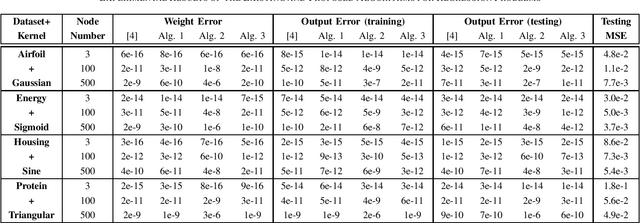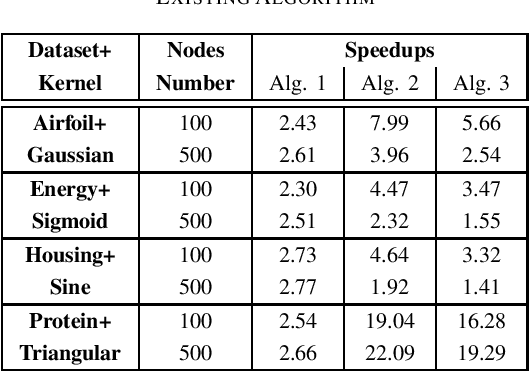Efficient Inverse-Free Algorithms for Extreme Learning Machine Based on the Recursive Matrix Inverse and the Inverse LDL' Factorization
Paper and Code
Nov 12, 2019



The inverse-free extreme learning machine (ELM) algorithm proposed in [4] was based on an inverse-free algorithm to compute the regularized pseudo-inverse, which was deduced from an inverse-free recursive algorithm to update the inverse of a Hermitian matrix. Before that recursive algorithm was applied in [4], its improved version had been utilized in previous literatures [9], [10]. Accordingly from the improved recursive algorithm [9], [10], we deduce a more efficient inverse-free algorithm to update the regularized pseudo-inverse, from which we develop the proposed inverse-free ELM algorithm 1. Moreover, the proposed ELM algorithm 2 further reduces the computational complexity, which computes the output weights directly from the updated inverse, and avoids computing the regularized pseudoinverse. Lastly, instead of updating the inverse, the proposed ELM algorithm 3 updates the LDLT factor of the inverse by the inverse LDLT factorization [11], to avoid numerical instabilities after a very large number of iterations [12]. With respect to the existing ELM algorithm, the proposed ELM algorithms 1, 2 and 3 are expected to require only (8+3)/M , (8+1)/M and (8+1)/M of complexities, respectively, where M is the output node number. In the numerical experiments, the standard ELM, the existing inverse-free ELM algorithm and the proposed ELM algorithms 1, 2 and 3 achieve the same performance in regression and classification, while all the 3 proposed algorithms significantly accelerate the existing inverse-free ELM algorithm
 Add to Chrome
Add to Chrome Add to Firefox
Add to Firefox Add to Edge
Add to Edge